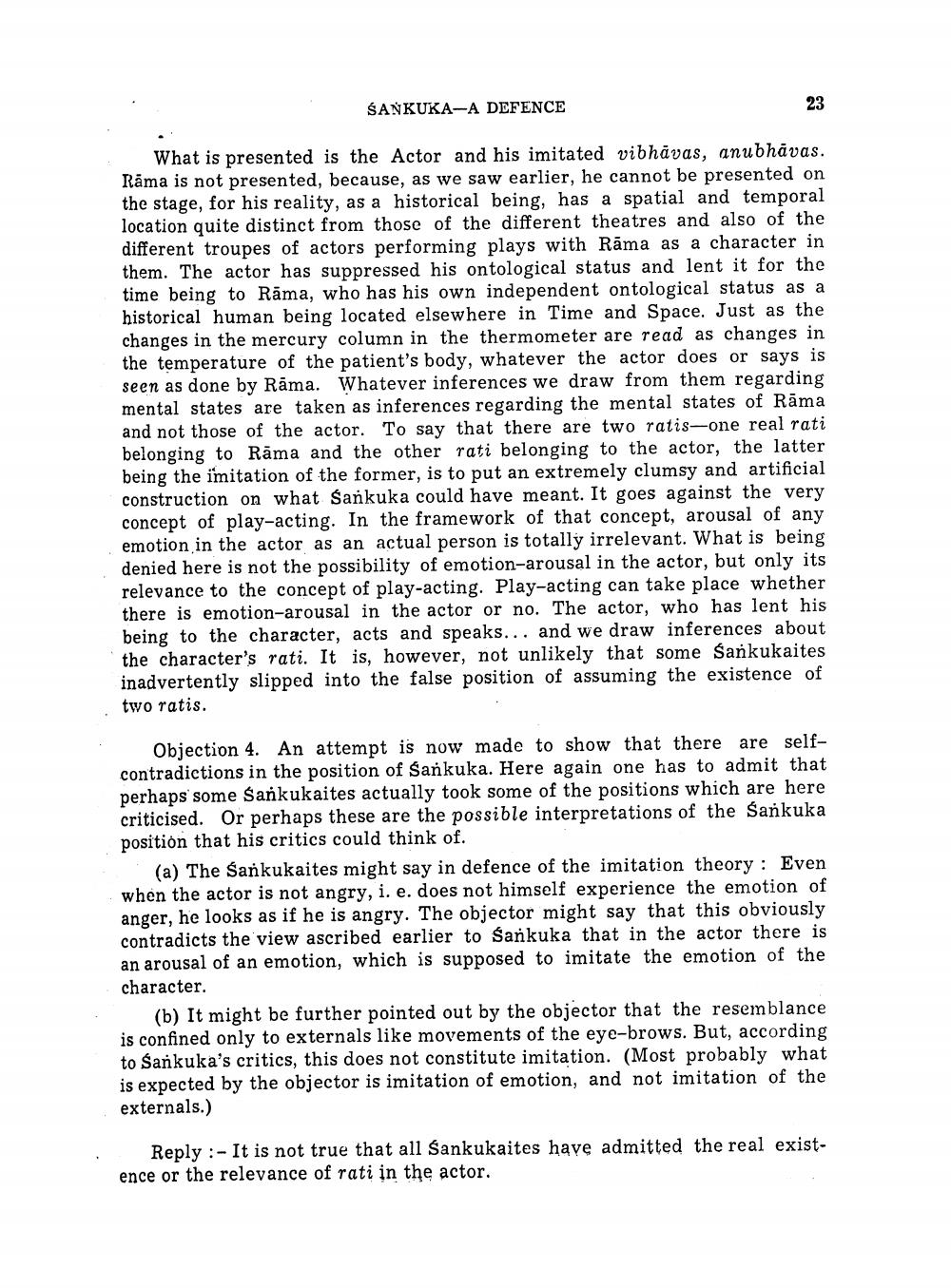________________
ŠANKUKA-A DEFENCE
What is presented is the Actor and his imitated vibhāvas, anubhāvas. Rāma is not presented, because, as we saw earlier, he cannot be presented on the stage, for his reality, as a historical being, has a spatial and temporal location quite distinct from those of the different theatres and also of the different troupes of actors performing plays with Rāma as a character in them. The actor has suppressed his ontological status and lent it for the time being to Rāma, who has his own independent ontological status as a historical human being located elsewhere in Time and Space. Just as the changes in the mercury column in the thermometer are read as changes in the temperature of the patient's body, whatever the actor does or says is seen as done by Rāma. Whatever inferences we draw from them regarding mental states are taken as inferences regarding the mental states of Rāma and not those of the actor. To say that there are two ratis-one real rati belonging to Rāma and the other rati belonging to the actor, the latter being the imitation of the former, is to put an extremely clumsy and artificial construction on what Sankuka could have meant. It goes against the very concept of play-acting. In the framework of that concept, arousal of any emotion in the actor as an actual person is totally irrelevant. What is being denied here is not the possibility of emotion-arousal in the actor, but only its relevance to the concept of play-acting. Play-acting can take place whether there is emotion-arousal in the actor or no. The actor, who has lent his being to the character, acts and speaks... and we draw inferences about the character's rati. It is, however, not unlikely that some Sankukaites inadvertently slipped into the false position of assuming the existence of two ratis.
Objection 4. An attempt is now made to show that there are selfcontradictions in the position of Sankuka. Here again one has to admit that perhaps some sankukaites actually took some of the positions which are here criticised. Or perhaps these are the possible interpretations of the Sankuka position that his critics could think of.
(a) The Sankukaites might say in defence of the imitation theory : Even when the actor is not angry, i. e. does not himself experience the emotion of anger, he looks as if he is angry. The objector might say that this obviously contradicts the view ascribed earlier to Sankuka that in the actor there is an arousal of an emotion, which is supposed to imitate the emotion of the character.
(b) It might be further pointed out by the objector that the resemblance is confined only to externals like movements of the eye-brows. But, according to Sankuka's critics, this does not constitute imitation. (Most probably what is expected by the objector is imitation of emotion, and not imitation of the externals.)
Reply :- It is not true that all Sankukaites have admitted the real existence or the relevance of rati in the actor.




